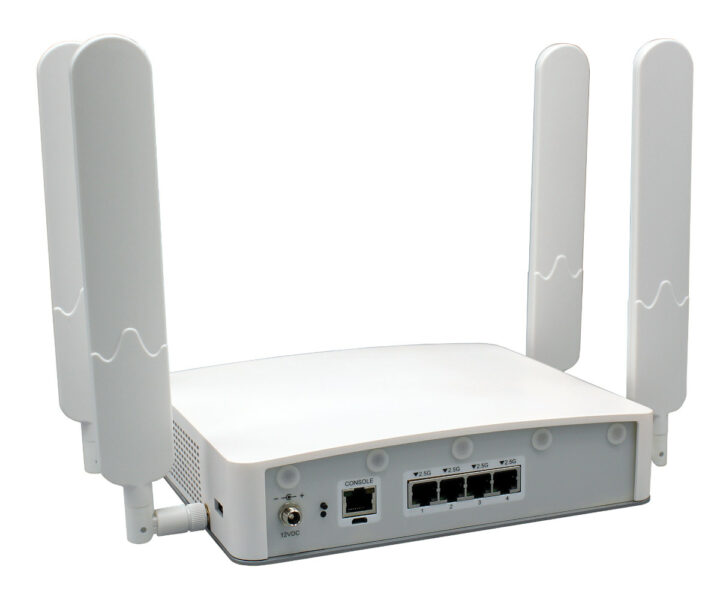Intel Atom C1100, C1110, and C1130 “Arizona Beach” processors have been discreetly launched last year for low-power network appliances and customer-premises equipment (CPE).
The C1100 is a dual-core processor clocked at up to 2.10 GHz, the C1110 a quad-core at up to 2.10 GHz, and the C1130 is an octa-core processor running at up to 2.5 GHz. All are manufactured with an Intel 7 process, support up to 32GB LPDDR5 memory with ECC, and offer up to twenty PCIe Gen 4 lanes.
Intel Atom C1100 | Intel Atom C1110 | Intel Atom C1130 |
|
|---|---|---|---|
| Total cores | 2 | 4 | 8 |
| CPU frequency | 2.10 GHz | 2.50 GHz |
|
| TDP | 10W | 13W | 32W |
| Cache | 6MB |
||
| Total L2 cache | 2MB | 4MB |
|
| Max memory size | 32GB with ECC |
||
| Memory type | LPDDR5, 5200 MT/s, x64 |
||
| PCIe | Up to 20 PCIe Gen 4 lanes |
||
You’ll find a more detailed comparison on Intel Ark. They serve the same markets as the Atom Denverton processors introduced several years ago.

We could find at least one product using the new Atom C1100, C1110, and C1130 processors with Silicom’s Valencia network appliance that offers up to 16GB LPDDR5, UFS, eMMC, and SSD storage, four native 2.5GbE ports, optional 10G SFP+ and PoE++, support for dual 4G/5G cellular cards, support for Wi-Fi 6/6E cards, as well as high-performance AI cards. Further information about the network appliance may be found on the product page.
Via ServeTheHome, and thanks to TLS for the tip.

Jean-Luc started CNX Software in 2010 as a part-time endeavor, before quitting his job as a software engineering manager, and starting to write daily news, and reviews full time later in 2011.
Support CNX Software! Donate via cryptocurrencies, become a Patron on Patreon, or purchase goods on Amazon or Aliexpress




It’s the second time I notice that new generations of processors consume more than the previous generation despite using a lower process node. The octa-core C3758R in 14nm was at 26W TDP, with 16 MB cache The new C1130 in 7nm is at 32W TDP for only 4 MB cache. So why would customers want to “upgrade” ? I think intel will really need to explain if their TDP measurements changed over time,or under which condition it reaches that power level. Even better, they should show how much a given workload consumes at a similar performance level.
It has a total of 6 MB of cache, 4MB of which is L2. Things like LPDDR5 and 20 lanes of PCIe 4.0 support might be reason enough to upgrade for some, depending on the type of device you’re making/selling/buying. Performance per core should also be significantly better.
The 6MB of cache is L3 and it’s almost certainly not inclusive of L2. So the total should be 4 MB of L2 + 6 MB of L3 = 10 MB of cache.
The C3758R basically has 16 MB of L2. There is a lot of stuff that depends on more than just cache size too.
Very interesting.
I have the same questions regarding Intel N100 rated for 6TDP but idling at around 10-13W.
I know TDP != power consumption, but most of the Intel CPUs use much less W when idling that rated TDP.
Actually 4MB of L2 + 6 MB of L3 cache.
In any case, it has much newer cores with better ISA support(like AVX2), much better per core performance as those older Atoms are still Goldmont, which are three generation behind Gracemont. The IPC difference should be massive as Tremont alone had something like 30% IPC increase over Goldmont Plus, which was also 20~30% over Goldmont. That coupled with the higher clocks should make some extreme difference.
> Actually 4MB of L2 + 6 MB of L3 cache.
Intel shows 4MB L2 cache only for the C1130 but 2MB for the two others.
He said the C1130, which is the part with 4 MB of L2, that is two Gracemont Clusters.
Likewise, not all atoms from the same generation as the cited C3758R have 16 MB of cache.